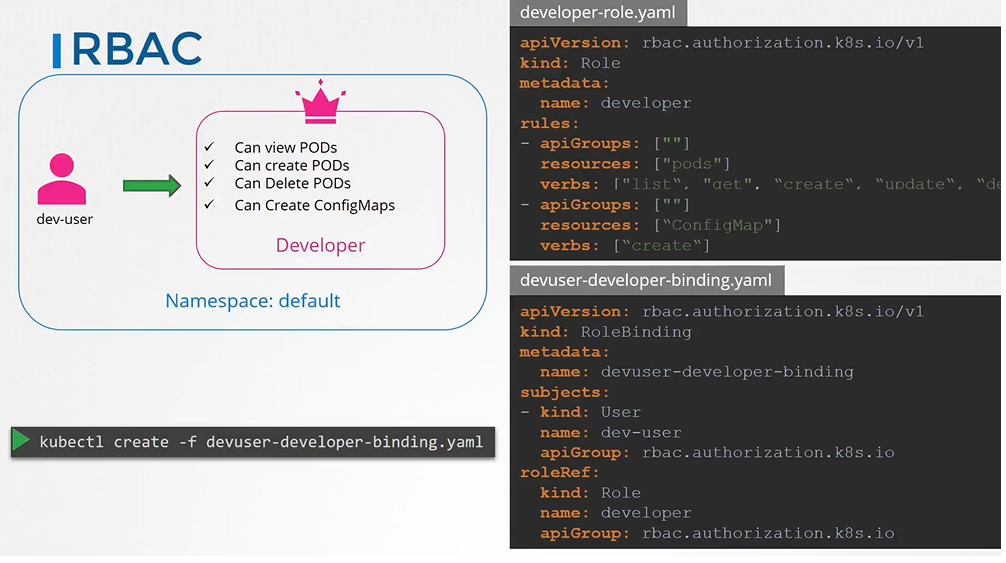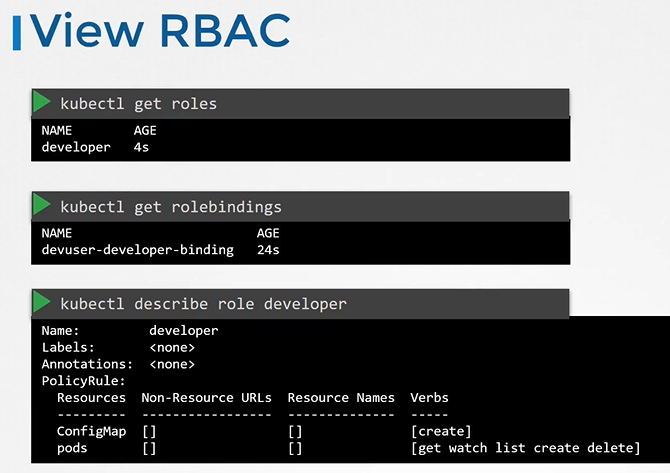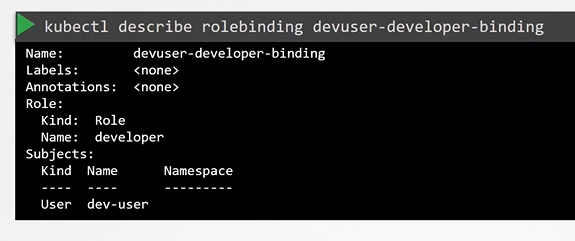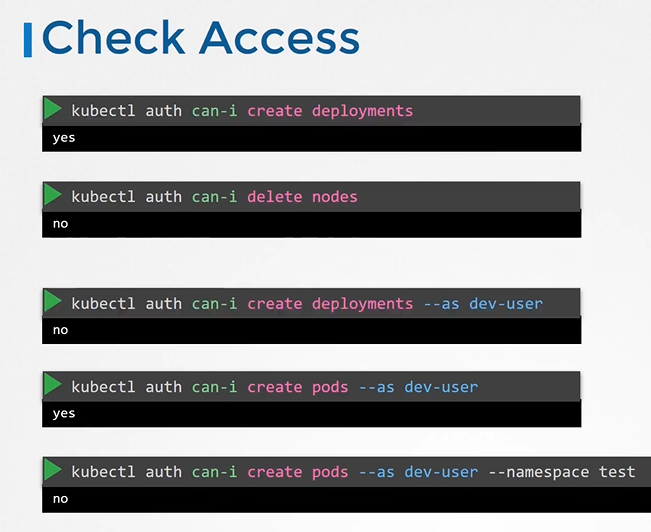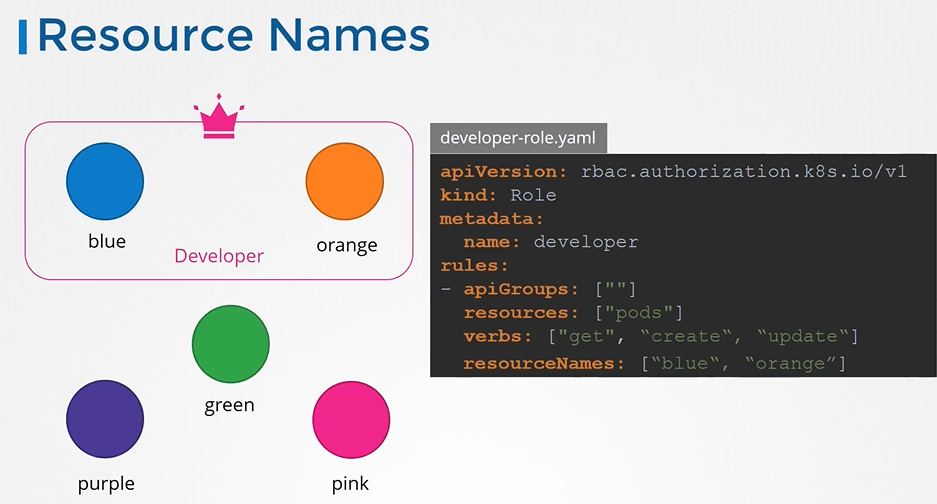k8s.github.io
RBAC
- Take me to Video Tutorial
In this section, we will take a look at RBAC
How do we create a role?
- Each role has 3 sections
- apiGroups
- resources
- verbs
- create the role with kubectl command
$ kubectl create -f developer-role.yaml
The next step is to link the user to that role.
- For this we create another object called
RoleBinding. This role binding object links a user object to a role. - create the role binding using kubectl command
$ kubectl create -f devuser-developer-binding.yaml - Also note that the roles and role bindings fall under the scope of namespace.
```
apiVersion: rbac.authorization.k8s.io/v1
kind: Role
metadata:
name: developer
rules:
- apiGroups: [””] # “” indicates the core API group resources: [“pods”] verbs: [“get”, “list”, “update”, “delete”, “create”]
- apiGroups: [””]
resources: [“ConfigMap”]
verbs: [“create”]
apiVersion: rbac.authorization.k8s.io/v1 kind: RoleBinding metadata: name: devuser-developer-binding subjects:
- kind: User
name: dev-user # “name” is case sensitive
apiGroup: rbac.authorization.k8s.io
roleRef:
kind: Role
name: developer
apiGroup: rbac.authorization.k8s.io
```
View RBAC
- To list roles
$ kubectl get roles - To list rolebindings
$ kubectl get rolebindings - To describe role
$ kubectl describe role developer - To describe rolebinding
$ kubectl describe rolebinding devuser-developer-binding
What if you being a user would like to see if you have access to a particular resource in the cluster.
Check Access
- You can use the kubectl auth command
$ kubectl auth can-i create deployments $ kubectl auth can-i delete nodes$ kubectl auth can-i create deployments --as dev-user $ kubectl auth can-i create pods --as dev-user$ kubectl auth can-i create pods --as dev-user --namespace test
Resource Names
- Note on resource names we just saw how you can provide access to users for resources like pods within the namespace.
```
apiVersion: rbac.authorization.k8s.io/v1
kind: Role
metadata:
name: developer
rules:
- apiGroups: [””] # “” indicates the core API group
resources: [“pods”]
verbs: [“get”, “update”, “create”]
resourceNames: [“blue”, “orange”]
```
- apiGroups: [””] # “” indicates the core API group
resources: [“pods”]
verbs: [“get”, “update”, “create”]
resourceNames: [“blue”, “orange”]
```
K8s Reference Docs
- https://kubernetes.io/docs/reference/access-authn-authz/rbac/
- https://kubernetes.io/docs/reference/access-authn-authz/rbac/#command-line-utilities
